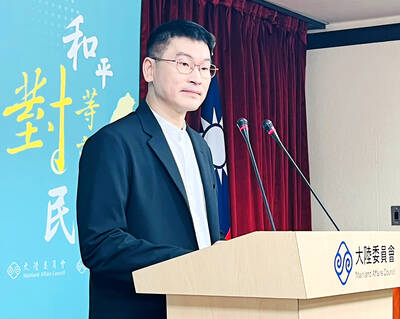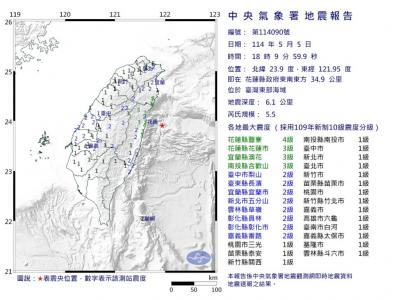As Taiwan awaits Washington’s decision on whether it will sell the Lockheed Martin F-16C/D aircraft Taipei has been seeking since 2007, rumors are now emerging that Taipei’s request for preferred radar system for an upgrade program for its ageing F-16A/Bs might also be encountering difficulties.
The US government is scheduled to announce on Oct. 1 — national day in the People’s Republic of China — whether it will proceed with the sale of 66 F-16C/Ds to Taiwan or limit itself to a US$4.5 billion upgrade for Taiwan’s 144 F-16A/Bs acquired in the early 1990s.
Taiwan does not regard the upgrades as an alternative to the F-16C/Ds and maintains that the two options must be exercised to ensure a balance of air power in the Taiwan Strait.
In addition to new electronic warfare systems, radio, engines and missiles, one key component of the upgrade would be the acquisition of advanced active electronically scanned array (AESA) radar, a “drop in” modular system regarded as an ideal option to give aging fighter fleets the world over a second life, especially as countries are becoming increasingly reluctant to acquire the problem-plagued F-35.
Aside from nearly doubling the range of the standard mechanically scanned array (MSA) radar currently used on the F-16, AESA radars can operate in all weather and provide multifunction, ultra-high resolution air-to-air and air-to-ground coverage.
However, US officials are divided on whether to provide Taiwan with AESA technology over fears of possible technological transfer to China. One US source recently referred to the AESA program as currently being “off the radar” in Washington, with no movement on an eventual release.
Defense experts nevertheless believe the AESA has a better chance of being released as a consolation prize if the US turns down Taiwan’s request for the F-16C/Ds.
A senior defense industry official involved in the F-16 program confirmed to the Taipei Times at the Taipei Aerospace and Defense Technology Exhibition yesterday that the Taiwanese Air Force had signaled its intent to Washington to purchase a total of 144 AESA radar units to retrofit all its F-16A/Bs.
The likeliest candidate to provide Taiwan with ASEA radar is Raytheon, with its Raytheon Advanced Combat Radar (RACR), with Northrop Grumman’s Scalable Agile Beam Radar (SABR) the other option. Both are optimized to fit F-16 aircraft.
If Taiwan failed to obtain AESA radar, an alternative would be less advanced updates to the current ones used on its F-16s.
Speaking at the Paris Air Show in late June, Mark Kula, vice president for tactical airborne systems at Raytheon said the company hoped to have “some sort of go ahead” on a production contract for the RACR “within the year.”
Defense analysts then said the first customer would be either Taiwan or South Korea, which are both seeking to modernize their F-16s.
Drew Robbins, manager of the F-16 radar programs at Raytheon, told the Taipei Times yesterday that the RACR was fully developed and operational and that a number of countries in Asia had expressed interest buying it, though no orders had been placed yet.
He would not provide figures on cost per unit.
Asked if costs or other considerations were behind the apparently stalled efforts to secure AESA radar for Taiwan, officials at Raytheon denied this was the case, adding that the problem was more political and set in Washington.

An essay competition jointly organized by a local writing society and a publisher affiliated with the Chinese Communist Party (CCP) might have contravened the Act Governing Relations Between the People of the Taiwan Area and the Mainland Area (臺灣地區與大陸地區人民關係條例), the Mainland Affairs Council (MAC) said on Thursday. “In this case, the partner organization is clearly an agency under the CCP’s Fujian Provincial Committee,” MAC Deputy Minister and spokesperson Liang Wen-chieh (梁文傑) said at a news briefing in Taipei. “It also involves bringing Taiwanese students to China with all-expenses-paid arrangements to attend award ceremonies and camps,” Liang said. Those two “characteristics” are typically sufficient

A magnitude 5.9 earthquake that struck about 33km off the coast of Hualien City was the "main shock" in a series of quakes in the area, with aftershocks expected over the next three days, the Central Weather Administration (CWA) said yesterday. Prior to the magnitude 5.9 quake shaking most of Taiwan at 6:53pm yesterday, six other earthquakes stronger than a magnitude of 4, starting with a magnitude 5.5 quake at 6:09pm, occurred in the area. CWA Seismological Center Director Wu Chien-fu (吳健富) confirmed that the quakes were all part of the same series and that the magnitude 5.5 temblor was

The brilliant blue waters, thick foliage and bucolic atmosphere on this seemingly idyllic archipelago deep in the Pacific Ocean belie the key role it now plays in a titanic geopolitical struggle. Palau is again on the front line as China, and the US and its allies prepare their forces in an intensifying contest for control over the Asia-Pacific region. The democratic nation of just 17,000 people hosts US-controlled airstrips and soon-to-be-completed radar installations that the US military describes as “critical” to monitoring vast swathes of water and airspace. It is also a key piece of the second island chain, a string of

The Central Weather Administration has issued a heat alert for southeastern Taiwan, warning of temperatures as high as 36°C today, while alerting some coastal areas of strong winds later in the day. Kaohsiung’s Neimen District (內門) and Pingtung County’s Neipu Township (內埔) are under an orange heat alert, which warns of temperatures as high as 36°C for three consecutive days, the CWA said, citing southwest winds. The heat would also extend to Tainan’s Nansi (楠西) and Yujing (玉井) districts, as well as Pingtung’s Gaoshu (高樹), Yanpu (鹽埔) and Majia (瑪家) townships, it said, forecasting highs of up to 36°C in those areas